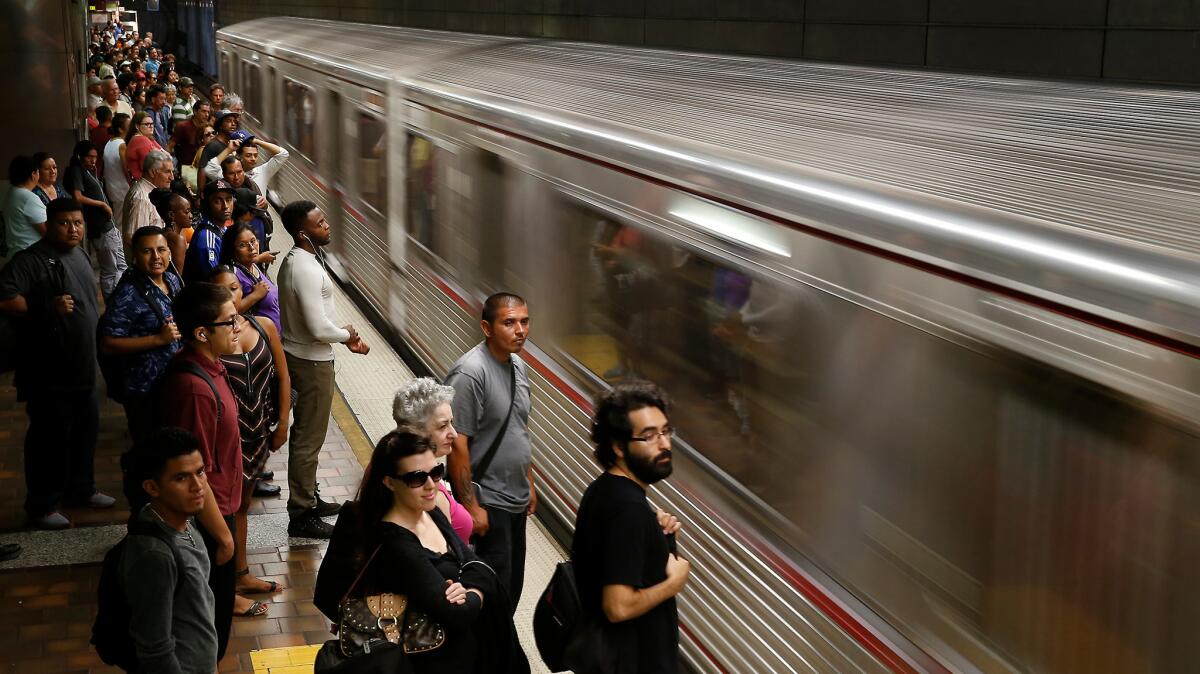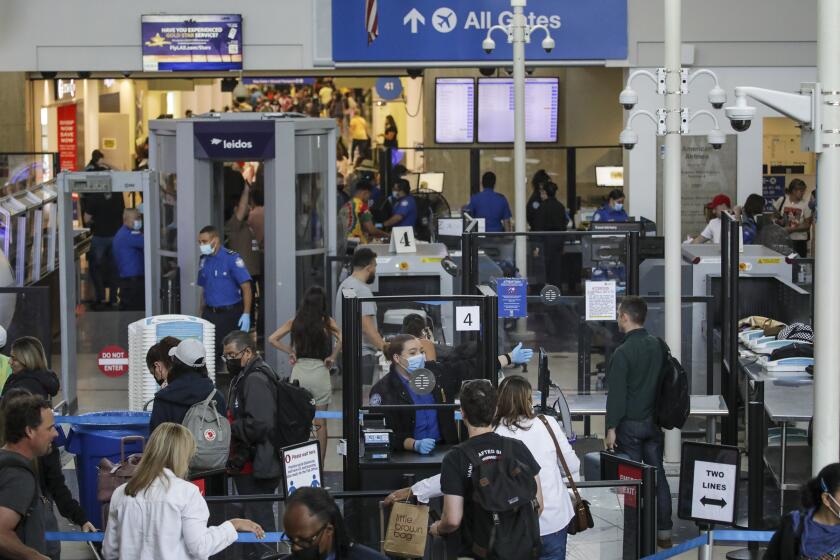Campaigns supporting Metro’s transportation tax bring in more than $4.5 million

- Share via
Supporters of a proposed sales tax increase that would fund a dramatic expansion of Los Angeles County’s passenger rail network have contributed more than $4.5 million this year, campaign disclosures show.
More than three-quarters of that amount came from developers, organized labor, engineering firms and other groups that could see financial gains from the Southern California infrastructure building boom that Measure M would create, a Times analysis found.
For the record:
7:25 a.m. June 2, 2025An earlier version of this article said the proposed sales tax increase would raise $860 million per year. The tax would raise $860 million per year in its first full year of assessment, but estimates suggest revenue will rise steadily over time due to inflation, population increase and the rising costs of goods.
The “Los Angeles County Traffic Improvement Plan” would fund transit operations, highway upgrades and nearly a dozen rail lines and extensions, including a tunnel through the Sepulveda Pass and connections to Claremont, Van Nuys and Artesia.
Measure M would raise an estimated $860 million in 2018, the first full year that the tax is assessed, and about $120 billion in revenue over four decades.
The Metropolitan Transportation Authority would fund the investments through a new half-cent sales tax with no end date. The rate would double to 1% in 2039 when another half-cent tax expires.
A new, permanent source of revenue significantly increases Metro’s borrowing capacity, giving officials more flexibility to draft one of the most ambitious transit expansion plans in recent U.S. history.
The levy would boost the county’s base sales tax rate to 9.5%. The proposal requires a two-thirds vote to pass.
California law bars Metro officials from using taxpayer funds to advocate for Measure M. But several coalitions of advocates and politicians have taken up the fundraising and lobbying mantle.
That includes the Yes on M campaign, which reported nearly $4.4 million in contributions between Jan. 1 and Sept. 24 and has spent less than 5% of its cash on hand.
Yes on M spokesman Yusef Robb said in an emailed statement that the campaign is planning a “major” television advertising buy to coincide with the arrival of vote-by-mail ballots in advance of the Nov. 8 election.
Of the $4.4 million, $675,000 came from a committee spearheaded by Los Angeles Mayor Eric Garcetti, which has reported $800,000 in contributions this year from organized labor, filings show.
A fundraising group run by Move L.A., the nonprofit that urged passage for the Measure R half-cent tax in 2008, has raised just over $55,000, including a large donation from Jacobs Engineering and a series of smaller donations from engineers, consultants and architects.
The largest single contribution to pro-Measure M groups came from HNTB Holdings. The independent political action committee arm of the Kansas City, Mo.-based construction company donated $550,000.
Other donors include the construction and engineering companies Parsons Brinckerhoff and Aecom.
Voters will also see mail from outside groups, including the AARP, which plans to send postcards to its 700,000 members in Greater Los Angeles, urging support for Measure M.
Opponents to the Metro measure have not formed an official fundraising committee, but several cities in the South Bay and southeast of downtown have complained that spending in Measure M would favor the northern half of the county.
Others have said the measure would not return enough funding to municipalities for local transportation needs, including street repairs.
Some have contributed to a new information campaign spearheaded by the Gateway Cities Council of Governments, including a series of short videos.
In one, a map of the county shows new transit lines and highway improvements and when they would open.
As each date appears on the map, the narrator says: “Good news for the city of L.A. first — and good news for southeast L.A. County and the South Bay, in about 40 years.”
For more transportation news, follow @laura_nelson on Twitter.
UPDATES:
5:35 p.m.: This article was updated with a statement from Yes on M spokesman Yusef Robb.
This article was originally published at 12:30 p.m.
More to Read
Sign up for Essential California
The most important California stories and recommendations in your inbox every morning.
You may occasionally receive promotional content from the Los Angeles Times.














